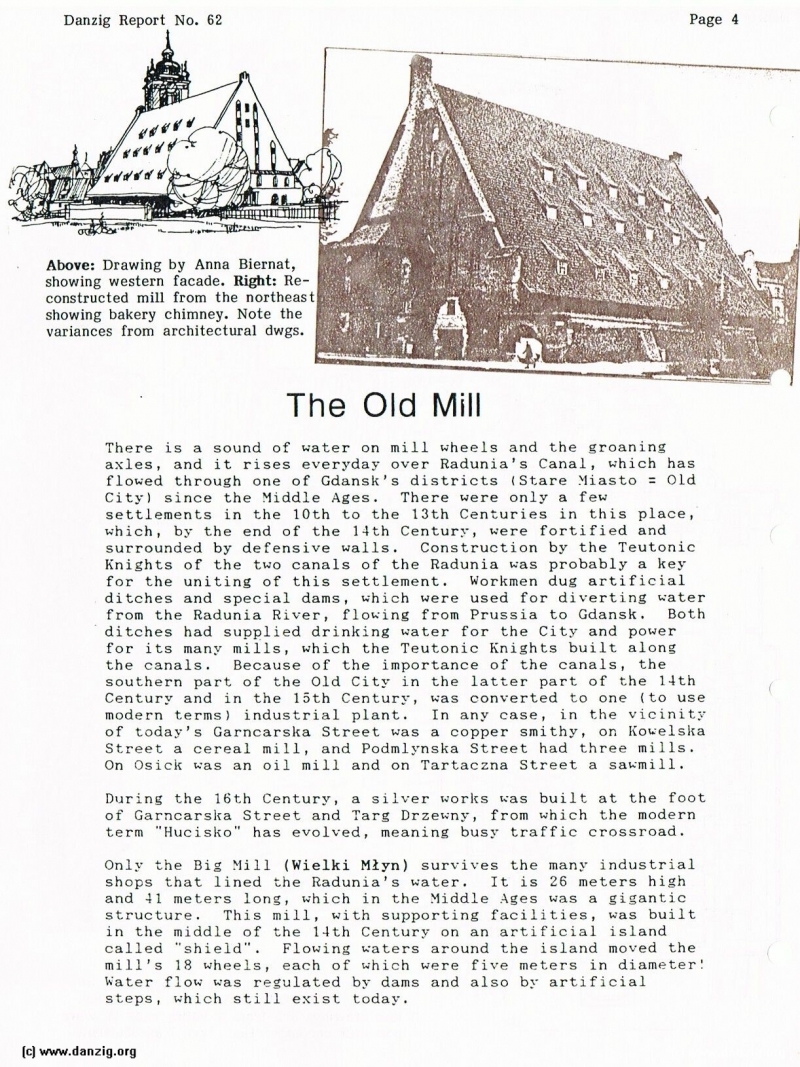
Above: Drawing by Anna Biernat, showing western facade. Right: Reconstructed mill from the northeast showing bakery chimney. Note the variances from architectural drawings.
>> The Old Mill
There is a sound of water on mill wheels and the groaning axles, and it rises everyday over Radunia’s Canal, which has flowed through one of Gdansk’s districts (Stare Miasto = Old City) since the Middle Ages. There were only a few settlements in the 10th to the 13th Centuries in this place, which, by the end of the 14th Century, were fortified and surrounded by defensive walls. Construction by the Teutonic Knights of’ the two canals of the Radunia was probably a key for the uniting of this settlement. Workmen dug artificial ditches and special dams, which were used for diverting water from the Radunia River, flowing from Prussia to Gdansk. Both ditches had supplied drinking water for the City and power for its many mills, which the Teutonic Knights built along the canals. Because of the importance of the canals, the southern part of the Old City in the latter part of the 14th Century and in the 15th Century, was converted to one (to use modern terms) industrial plant. In any case, in the vicinity of today’s Garncarslca Street was a copper smithy, on Kowelska Street a cereal mill, and Podmlynska Street had three mills. On Osick was an oil mill and on Tartaczna Street a sawmill.
During the 16th Century, a silver works was built at the foot of Garncarslca Street and Targ Drzewny, from which the modern term “Hucisko” has evolved, meaning busy traffic crossroad.
Only the Big Mill (Wielki Mlyn) survives the many industrial shops that lined the Radunia’s water. It is 26 meters high and 31 meters long, which in the Middle Ages was a gigantic structure. This mill, with supporting facilities, was built in the middle of the 14th Century on an artificial island called “shield”. Flowing waters around the island moved the mill’s 18 wheels, each of which were five meters in diameter Water flow was regulated by dams and also by artificial steps, which still exist today.
Danzig Report Nr. 62 - 1st Quarter 1989, Page 4.
Hits: 3571
Added: 26/06/2015
Copyright: 2025 Danzig.org

